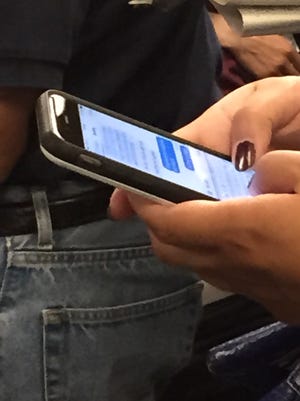Name that network: The carriers behind wireless resellers
Q. Which network does this wireless reseller use? They’re kind of mysterious about it.

A. Wireless resellers -- known in the business as MVNOs, short for “mobile virtual network operators” -- have to get their signals from somewhere, but most of the time it’s from only one of the big four U.S. carriers.
And Sprint and T-Mobile are overwhelmingly likely to be the carrier whose bandwidth lights up phones on MVNO services. Both have been far more welcoming of resellers than AT&T and Verizon.
(Your only major option for resold Verizon service comes with TracFone and its affiliated brands like StraightTalk and Net10. But it’s tricky to get a phone set up to prioritize VzW’s signals over those of the other three, which those services also resell.)
Although the differences in coverage between the big four have diminished after recent upgrades by Sprint and T-Mobile -- see the latest edition of PCMag.com’s exhaustive annual nationwide testing of that quartet -- you should still know whose network you’re going to use.
Their coverage may be equally good in major cities. But they’re not as reliable in some regions and in rural areas, as you can see with a closer look at PCMag’s research, the automated testing of RootMetrics and the crowdsourced data of OpenSignal.
There’s no mystery with the Sprint-owned Boost Mobile and Virgin Mobile USA, and T-Mobile’s MetroPCS is equally clear. The Sprint reseller Credo Mobile describes itself as such on its coverage page. Project Fi, the MVNO Google launched in 2015, said upfront that it combined Sprint and T-Mobile’s coverage; last week, it added the regional carrier US Cellular.
But while AT&T owns Cricket Wireless, its coverage map only identifies its source of service as “a reliable cell phone network that gives you more 4G LTE coverage nationwide than T-Mobile, MetroPCS, Sprint or Boost.”
Consumer Cellular, a reseller that has ranked high in reviews by Consumer Reports and other publications (including the guide to alternative wireless services that I maintain at the tech-review site the Wirecutter), only says that “we use the networks of the largest cellular providers in the United States.”
But one of the coverage maps it shows comes in AT&T’s favorite shade of orange, while the other, green map has captions along the bottom that match the map of T-Mobile -- which it, in fact, added last March.
Discount-priced FreedomPop resells Sprint, but you have to click around to its about-us page to learn that.
Marketing decisions explain some of this obscurity, but contractual restrictions lie behind others. The resellers Ting and Republic Wireless each started off with Sprint and then added T-Mobile -- under conditions that they not identify their new carrier.
So Ting’s coverage page only identifies its second network by its technical characteristics: “a nationwide 3G, HSPA and LTE network.” But the map and its captions match T-Mobile’s, except that coverage is displayed in green instead of T-Mo’s magenta.
At Republic, a tech-support document leaves even less to the imagination: “While we’re contractually not able to tell you the provider’s name, we can tell you that it’s the network that boasts that they have the nation's fastest 4G LTE network.”
Did I not mention a reseller you’re considering and which doesn’t appear on Wikipedia’s list of U.S. MVNOs? Ask about it in the comments, and I will answer it as soon as I can.
Rob Pegoraro is a tech writer based out of Washington, D.C. To submit a tech question, e-mail Rob at rob@robpegoraro.com. Follow him on Twitter at twitter.com/robpegoraro.